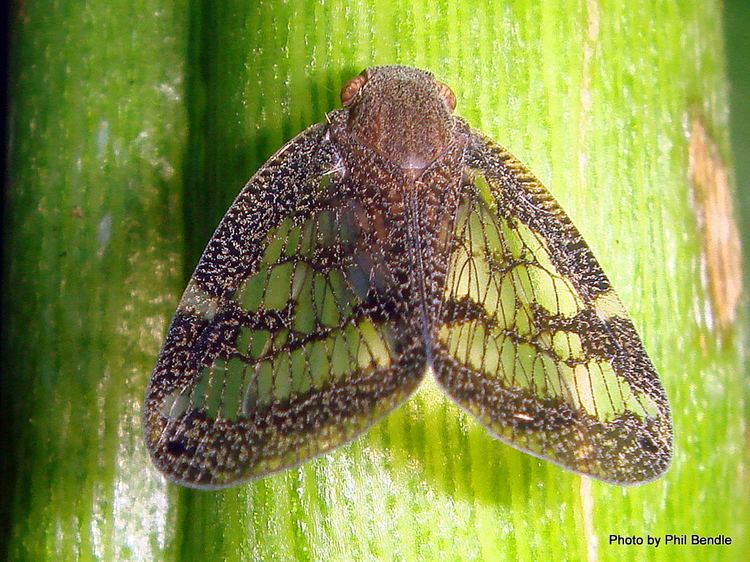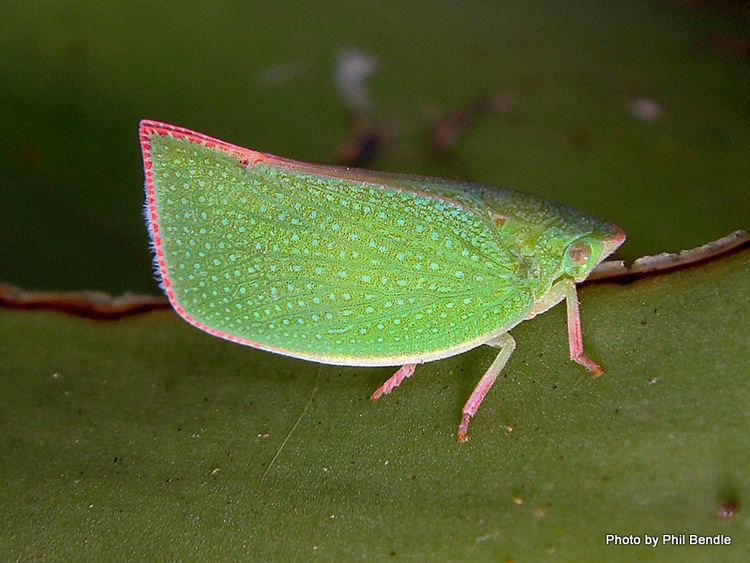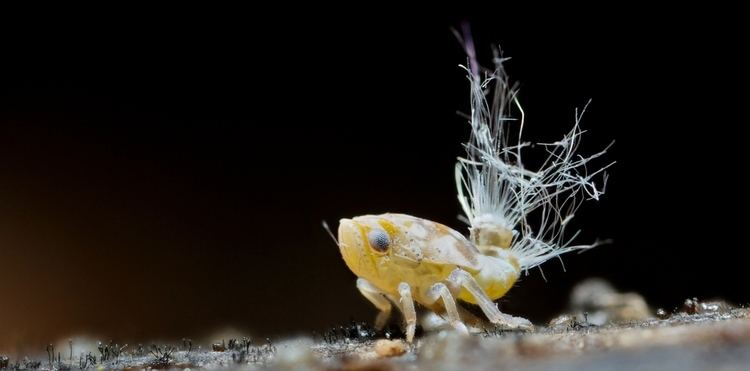Scientific name Scolypopa australis Rank Species | Superfamily Fulgoroidea Genus Scolypopa Order True bugs | |
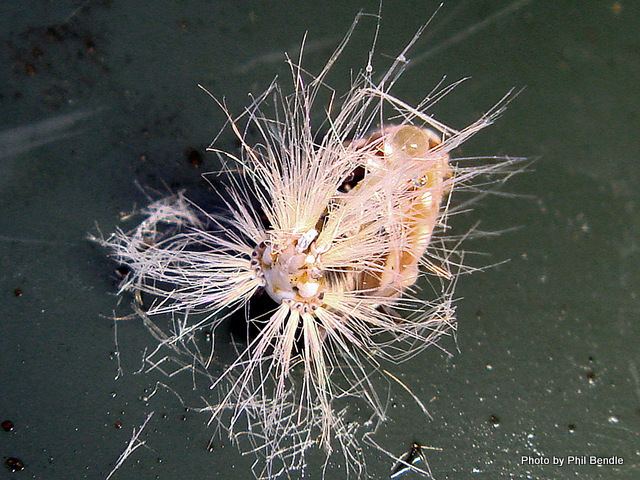 | ||
Similar Ricaniidae, True bugs, Coriaria arborea, Eurybrachidae, Ricania | ||
Passionvine hopper scolypopa australis
Scolypopa australis, commonly known as the passionvine hopper is a species of planthopper (Fulgoroidea) in the insect family Ricaniidae found in Australia. Despite their name, they are found not only on passion vines, but on many different plant species such as the lantana. Brown with partly transparent wings, they are about 7mm long as adults and 5mm as nymphs. As an adult they look somewhat like a moth to the untrained eye, and walk "like a ballerina". The nymphs are wingless and are informally known as fluffy bums. When sufficiently aroused they will hop off their plant "with a 'snap'". Like all planthoppers they suck plant sap. This leaves a honeydew secretion which bees gather. They are also known to cause honey poisoning.
Contents
- Passionvine hopper scolypopa australis
- Scolypopa australis nymphs spending quality time with their parents passionvine hopper
- In New Zealand
- References
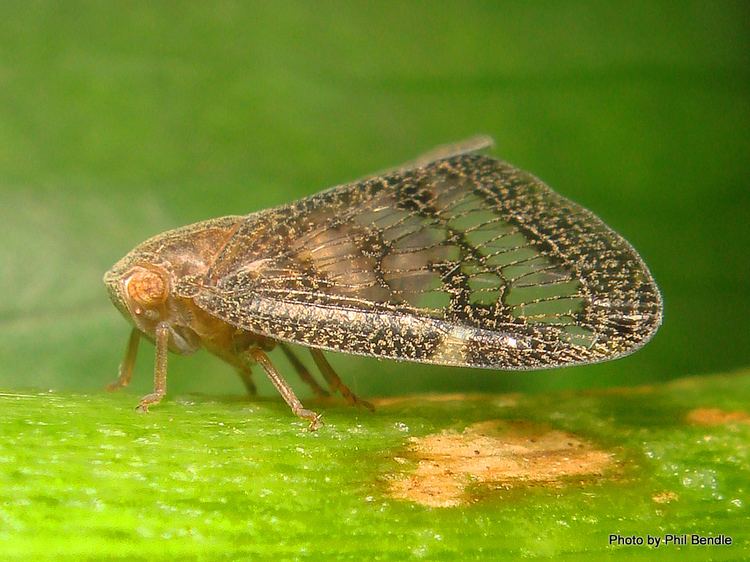
Scolypopa australis nymphs spending quality time with their parents passionvine hopper
In New Zealand

They arrived in New Zealand in 1876, where they are among over 40 (mostly native) species of planthopper including the introduced species Siphanta acuta (green planthoppers), Achilus flammeus (red fingernail bugs) and Anzora unicolor (grey planthoppers), all from Australia. They may be a vector of the 'sudden decline' disease caused by Phytoplasma australiense that has affected the native cabbage tree (Cordyline australis), and are a common pest in gardens. They are also found in regrowing forest. They are very common in the summer and autumn north of Nelson. Honey made from honeydew produced from the shrub tutu is poisonous for humans, despite being harmless to the bees that collected it. The last recorded deaths from eating honey containing tutin were in the 1890s, although sporadic outbreaks of toxic honey poisoning continue to occur. Poisoning symptoms include delirium.

